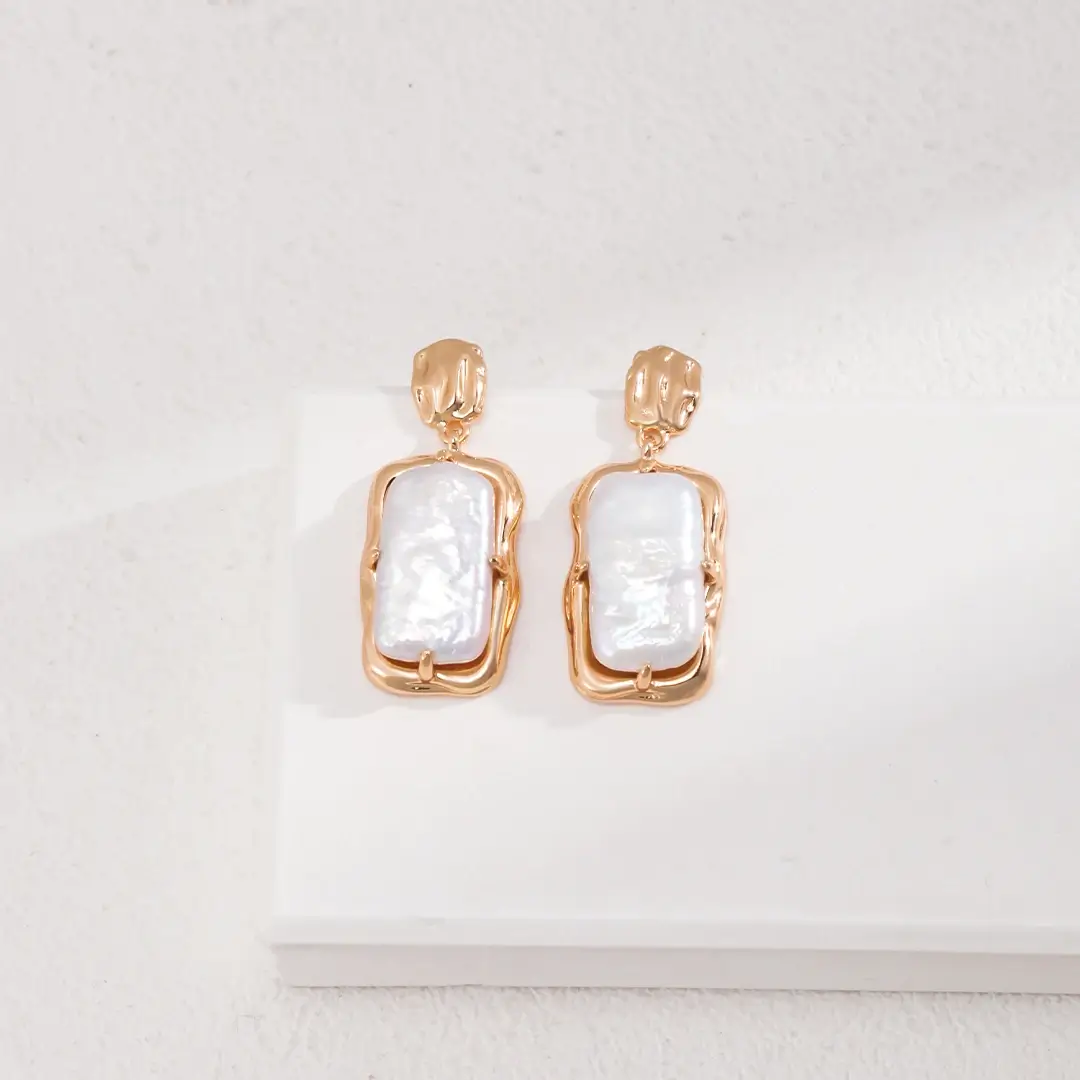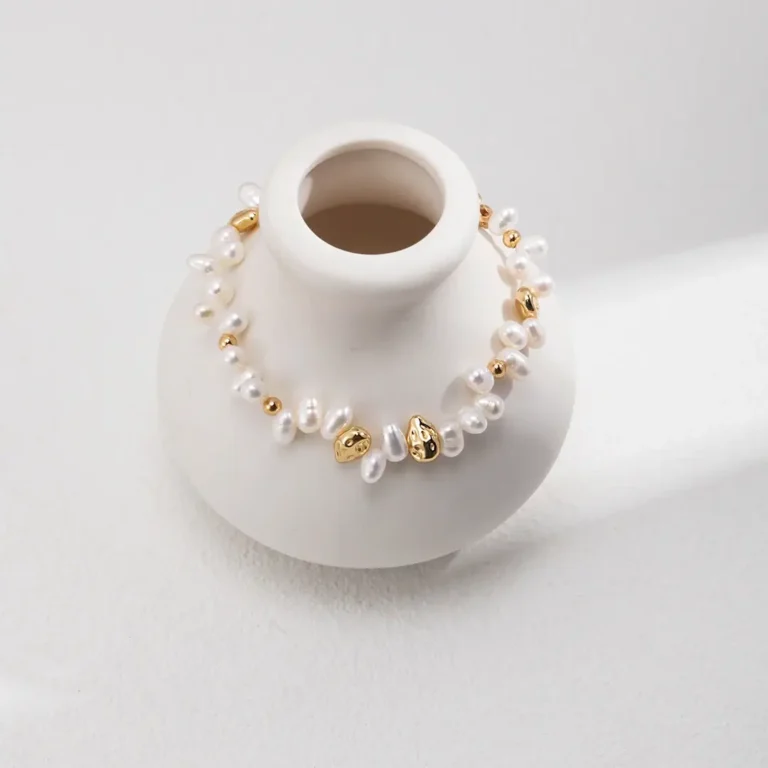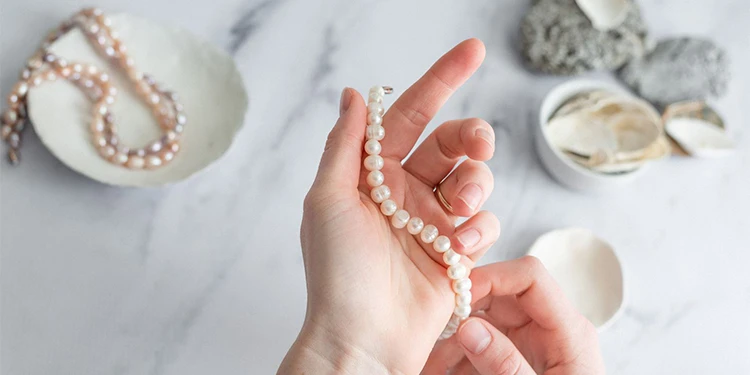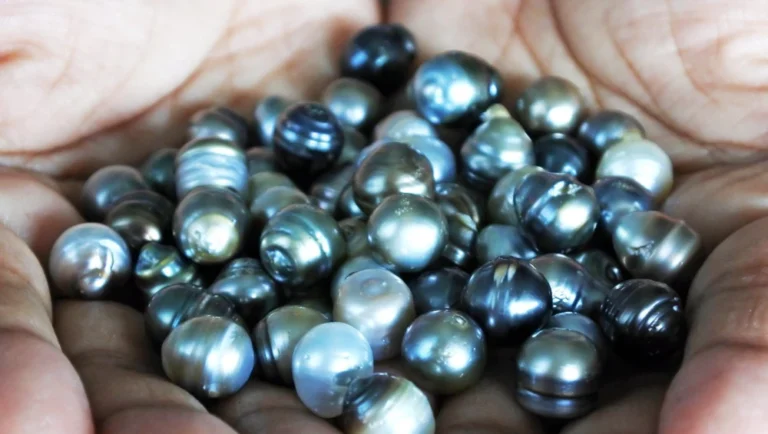What is the difference between pearls and baroque pearls?
For centuries, pearls have held a special place in the world of jewelry, symbolizing elegance, wisdom, and a timeless allure. While the image of a perfectly round pearl often comes to mind first, there exists a captivating world of non-conformist gems known as Baroque pearls. They represent two distinct philosophies of beauty: one of order and perfection, the other of freedom and expression.
This guide will help you navigate the enchanting differences between Classic Round and Baroque pearls, empowering you to choose the gem that truly resonates with your personal style.
The Origin Story — A Tale of Two Formations
1. Classic Round Pearls: Cultivated Perfection
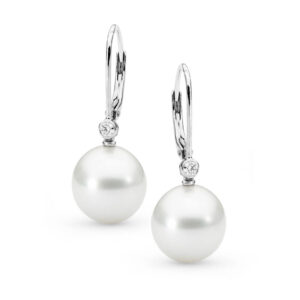
The journey of a classic round pearl is one of remarkable precision. In modern culturing, a master craftsperson carefully implants a perfectly spherical bead (the nucleus) into the oyster’s gonad (the pearl sac). This creates a controlled environment where the oyster, in response, secretes layers of nacre evenly around the irritant. Over time, this meticulous process results in the luminous, perfectly spherical gems we adore. Think of the renowned Akoya pearls from Japan or the luxurious South Sea pearls—they are the epitome of this cultivated artistry.
2. Baroque Pearls: Nature’s Freeform Art
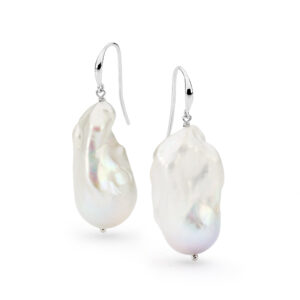
Baroque pearls, on the other hand, are nature’s unscripted masterpieces. Their unique shapes arise from less controlled conditions:
- Tissue Nucleation: Common in freshwater mussels, a piece of tissue is inserted without a round bead, allowing the pearl to grow in organic, unpredictable forms.
- Off-Center Growth: Sometimes, the nucleus attaches to the oyster’s shell or mantle tissue. The nacre builds up on one side, creating stunning shapes like “coin” or “button” pearls.
- Marks of Character: Environmental stresses, such as changes in water temperature or health of the oyster, can cause uneven nacre deposition, leading to beautiful ridges, wrinkles, and swirls. These aren’t flaws; they are the pearl’s unique fingerprint, telling the story of its life.
A Style Showdown — Timeless Elegance vs. Avant-Garde Edge
Classic Round Pearls: The Quintessential Elegance
The beauty of round pearls lies in their symmetry, harmony, and timeless grace. A strand of luminous, perfectly round pearls is a wardrobe cornerstone. It’s the jewelry equivalent of the little black dress—always appropriate, eternally chic. This is the beauty embodied by style icons like Audrey Hepburn and the enduring sophistication of brands like Mikimoto. It speaks a language of refined confidence and classic luxury.
Baroque Pearls: The Bold & The Artistic
Baroque pearls are all about individuality, drama, and modern artistry. No two are ever alike.
- Masters of Light: Their irregular surfaces act like prisms, creating incredible, vibrant iridescence (known as orient) that can be even more dynamic than that of round pearls.
- A Designer’s Muse: Their organic forms ignite creativity. Contemporary jewelry designers, such as Lydia Courteille or Melanie Georgacopoulos, are drawn to Baroque pearls for their sculptural quality. A Baroque pearl can be transformed into a statement ring, a conversation-starting pendant, or a pair of earrings that are pure wearable art. They appeal to those who see jewelry as a form of self-expression.
Making Your Choice — Investment vs. Expression
1. Value & Price Perspective
- Classic Round Pearls: Their value is judged by a strict rubric: roundness, luster, surface cleanliness, and size. A large, perfectly round, flawless South Sea pearl with mirror-like luster is a significant investment and a store of value.
- Baroque Pearls: Their value is more nuanced. While the quality of nacre and luster matter, the uniqueness of the shape and the creativity of the design are major price drivers. This makes Baroque pearls an excellent way to own a large, high-luster pearl at a more accessible price point. However, a one-of-a-kind Baroque piece from a renowned artist can also command a premium.
2. Which Pearl Aligns With Your Vibe?
Choose Classic Round Pearls if…
- You believe in timeless, heirloom-quality pieces.
- Your style is classically elegant and you need jewelry for formal events, the boardroom, or weddings.
- You view your purchase as a traditional jewelry investment.
Embrace Baroque Pearls if…
- You have a modern, eclectic style and love to make a statement.
- You are drawn to artistic, one-of-a-kind pieces that tell a story.
- You want high impact and size without the premium price tag of a perfect round pearl.
- You see beauty in unique character and appreciate a gem with a soul.
Final Thoughts
Round is the result of masterful cultivation. Baroque is the voice of nature’s untamed spirit. One is not better than the other—they are simply different expressions of beauty.
So, which one calls to you? Whether it’s the serene harmony of a classic strand or the bold character of a Baroque masterpiece, your perfect pearl is waiting to become a part of your story. Choose the one that feels not just beautiful, but truly you. After all, the best jewelry is a reflection of the woman who wears it.

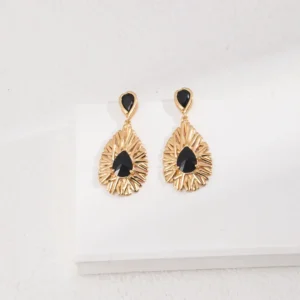 Gothic Royal Black Zircon Drop Earrings
Gothic Royal Black Zircon Drop Earrings 